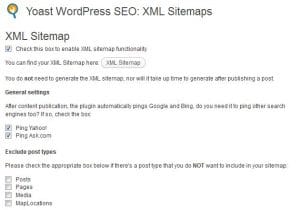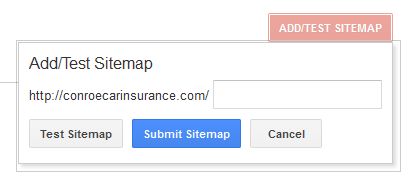 Typically WordPress blogs have several methods for page navigation including a menu bar either at the top, in the sidebar and/or in the footer. In addition, you can add search to your blog through various widgets (Search, Recent Posts, Category, Custom Menu, Archives, etc.). So with all that navigation available to your blog’s readers, why would you also want to include a WordPress blog sitemap?
Typically WordPress blogs have several methods for page navigation including a menu bar either at the top, in the sidebar and/or in the footer. In addition, you can add search to your blog through various widgets (Search, Recent Posts, Category, Custom Menu, Archives, etc.). So with all that navigation available to your blog’s readers, why would you also want to include a WordPress blog sitemap?
There are actually two kinds of sitemaps — one for blog visitors and one for search engine bots.
The sitemap for visitors is like an index or table of contents. These sitemaps are usually arranged to group the pages together and the posts together. Sometimes they also have a Category group.
If you have good navigation in your custom menus, you don’t absolutely need a visitor sitemap. If you think it would be helpful to your visitors, a plugin like Simple Sitemap will build one automatically and then keep it updated when you add new content. When selecting a sitemap plugin, make sure you can exclude pages. For example, you don’t want a page with your subscriber downloads to display in your visitor sitemap.
The sitemap for search engines is a file on your server that search engines will use to help index your site. It is typically an XML file and is not visible from your blog navigation. This sitemap can be created with a plugin.
A great plugin to use for this purpose is WordPress SEO by Yoast. You may know this plugin as one you use for creating meta titles, descriptions and keywords for SEO purposes, but it also can create a search engine sitemap as well. Look for the sitemap settings in the plugin’s dashboard
Check the box to enable it. It automatically pings Google and Bing when you add new pages or posts, but you can also have the plugin ping Yahoo and Ask.com. You can also exclude certain post types and taxonomies if you would like.
The next step is to input the location of this file in the search engines’ webmaster tools. For example, when you add a website to Google Webmaster Tools, you will have the opportunity to add a sitemap under the Optimization menu.
You would type into the box the filename of your sitemap. If you use the Yoast plugin, then you would type in sitemap.xml in the box. After you submit it to Google, it will show as pending until they next crawl your site to verify the sitemap. You will then see the number of pages included in the sitemap along with how many of those pages were indexed by Google.
Do you include either of these two WordPress blog sitemaps? Do you have a favorite sitemap plugin? Leave a comment to let us know your thoughts.




